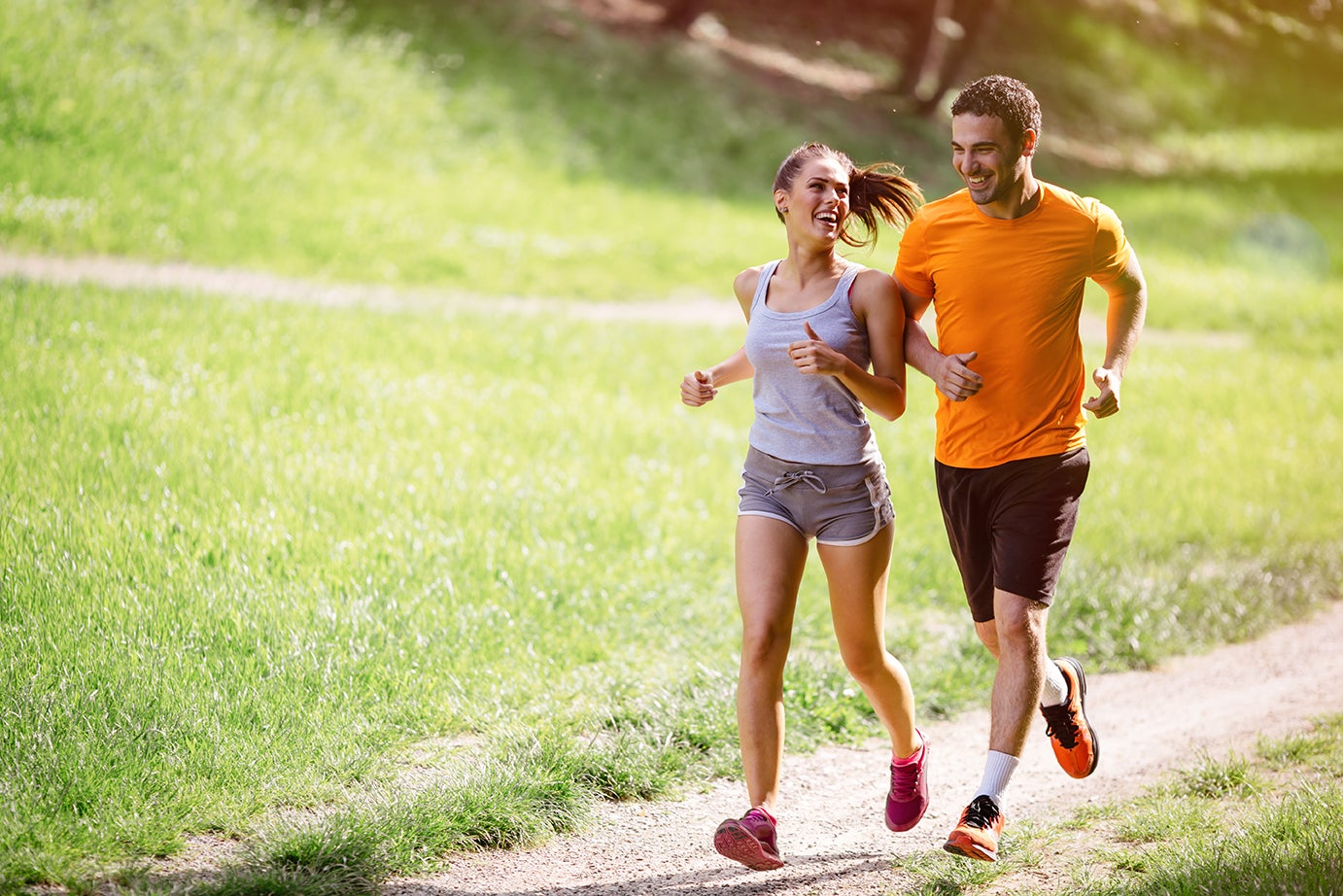About Natural Ways to Lower Cholesterol

Q: I can’t seem to get my cholesterol under 200, but I want to avoid taking medication. Does exercise really help?
A: Exercise can indeed help, depending on what kind you do. Think aerobic: brisk walking, jogging, singles tennis, cycling, dance workouts. Aerobic exercise has a small effect on total cholesterol, but it has a great effect on “good” cholesterol (high-density lipoprotein, or HDL), increasing it by 10 percent or more. Exercise also reduces triglycerides (blood fats).
And there’s no need to get especially winded. For cholesterol control, exercise duration counts more than intensity. People racking up 20 miles of jogging over the course of a week got the biggest HDL boost in a 2002 Duke University study. Think of that as a half-hour jog or a one-hour brisk walk five days a week. If you’re short on time, some studies suggest that breaking up your walk into smaller increments gives you the same benefit.
Resistance training — weight lifting — strengthens muscles, but the reports that it also cuts cholesterol have turned out to be a myth. Careful studies have revealed essentially no effect at all.
But yoga works. Several kinds of yoga have been tested, and all show a cholesterol-cutting effect. How? Yoga reduces stress hormones, which in turn lowers cholesterol. That’s why meditation is similar to yoga in its cholesterol-lowering power.
The biggest problem with aerobics or yogaor any exercise, for that matteris fitting it into our busy lives. What keeps many people on track is scheduling workouts, just like meetings or movies.
Before long, exercise becomes habit-formingin the best sense of the term.
Q: I know that eating oats helps, but are there other specific foods that can help lower cholesterol?
A: Yes. Try walnuts, for one. Eating three ounces (about 3¼4 cup, or about three medium handfuls) per day over several weeks can reduce LDL (“bad” cholesterol) by a good 15 percent. Similar effects have been seen with other nuts such as almonds, hazelnuts and even peanuts. But there’s a catch: Nuts are loaded with fat. Even though the fat in nuts is mostly “good” unsaturated fatmeaning it doesn’t raise cholesterolyou can easily wear all those good fats around your middle. Three ounces of nuts holds about 500 caloriesabout 25 percent of total daily calories for many people. So the trick is to have those calories instead of other foods, rather than in addition to them.
If three ounces a day seems a bit much, try just one ounce of nuts (one average handful). Harvard researchers say even that amount helps substantially, provided the nuts replace an equivalent amount of another food that’s high in saturated fat, such as cheese. The researchers tracked the change in heart risk (rather than the change in cholesterol) and found that, over the long run, replacing another fatty food with nuts reduces heart disease risk by about 45 percent.
Also, two margarine products have a major cholesterol-cutting effect when eaten daily. Benecol has cholesterol-lowering stanols derived from pine trees; Take Control has similar sterols from soy. Both can cut LDL levels by 14 percent or more when combined with other diet changes. You can cook, bake or even sauté with them, although they will add a few calories to your dietabout 70 per tablespoon of Benecol and 80 per tablespoon of Take Control, which is the amount you’ll need each day to get cholesterol benefits.
Q: Are there nutritional supplements that help?
A: Definitely. The one that should come to mind is the B vitamin niacin. It does everything you’d hope: It raises HDL better than statin drugs, easily increasing it by 10 to 20 percent, or even more. It also lowers LDL and triglycerides.
You can find niacin at any health food store. However, the dose needed to reduce cholesterol is highusually between one and three grams — and it often causes a red, hot flushing reaction that can be very uncomfortable and last an hour or more. But extended-release niacin, which is marketed under the prescription brand Niaspan, causes virtually no flushing and has largely taken over the niacin market.
Aerobics, yoga, nuts, cholesterol-lowering margarines, niacin — they all work to lower cholesterol. The key is to use them along with a healthful diet, loaded with vegetables, fruits, beans and whole grains, not instead of it. The combination can be powerfulon the order of a 30 percent drop in LDL and a 60 percent drop in heart attack risk.